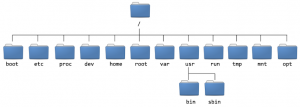In this article I will talk about the basic VMware vSphere components as small definitions.

In this article I will talk about the basic VMware vSphere components as small definitions.

Bu yazımda temel VMware vSphere bileşenlerinden ufak tanımlar olarak bahsedeceğim.

Although the use of virtualization, which is now indispensable for information technologies, is 10 years in the x86 community, Unix/Linux users have been benefited from the older time.
So what is virtualization?
Basically, it’s a technology that improves productivity by sharing the hardware resources on the server across multiple virtual servers. For now, I’m going to go over this definition and the server special.
Artık Bilgi Teknolojilerinin vazgeçilmezi olan sanallaştırmanın kullanımı x86 camiasında 10 yılı geçse de, Unix / Linux kullanıcıları daha eski zamandan beri faydalanmaktadırlar.
Peki nedir bu sanallaştırma?
Temel olarak sunucu üzerinde bulunan donanım kaynaklarının birden fazla sanal sunucu arasında paylaşılarak verimliliği arttıran bir teknoloji diyebiliriz. Şimdilik bu tanım üzerinden ve sunucu özelinde giderek konuyu fazla bulandırmayacağım.
It can be a bit tricky to detect and understand the Linux file system for years using the Microsoft operating system.
Basically, the Linux/Unix operating systems include hardware resources, but the “everything” is considered a file.
For example, “/proc/partitions” specifies the partitions on the disk, whereas “/dev/eth0” specifies the connected network adapter.
The following diagram shows the file system hierarchy of a Linux operating system based on Redhat/Centos.
Now let’s try to explain the structure one by one.

Yıllarca Microsoft işletim sistemi kullananlarda Linux dosya sistemini algılayıp anlamlandırmak biraz zorlayıcı olabiliyor.
Temel olarak Linux / Unix işletim sistemlerinde donanım kaynakları da dahil olmakla birlikte “her şey” dosya olarak nitelendirilir.
Örneğin /proc/partitions disk üzerindeki bölümleri belirtirken /dev/eth0 bağlı bulunan ağ adaptörünü belirtmektedir.
Aşağıdaki şemada Redhat / Centos temelli bir linux işletim sisteminin dosya sistemi hiyerarşisi görülmektedir.
Şimdi yapıyı tek tek açıklamaya çalışalım.
What is the Apple Volume Purchase Program (VPP) and the Apple Device Enrollment program (DEP)?
VPP is the solution that enables Apple to deploy applications from single point and manage licenses with mobile device management software on the enterprise side.
Exchanging keys and configuration are performed between mobile device management (MDM) and Apple Business Portal, which is basically used. Paid or free applications via VPP portal are taken up to the number of needs. One-point license management can be performed when this software is synced in an MDM environment. A corporate email address that has not been previously registered with the APP Store needs to be used.
As an example, 20 of X software were purchased and the relevant groups were assigned these software. Then, let’s say that 5 people from the assigned groups have left their jobs (even they did not return their devices), which in this case is needed from the former owners of wasted software, provides infrastructure for assigning new users to the process of VPP.
Apple Volume Purchase Program (VPP) ve Apple Device Enrollment Program (DEP) nedir ?
Apple’nın kurumsal tarafta mobil cihaz yönetim yazılımlarıyla tek noktadan uygulama ve lisans dağıtımının yapılmasını sağlayan çözümüdür VPP.
Temel olarak kullanılan mobil cihaz yönetimi (MDM) ile Apple Business Portal arasında anahtar değişimi ve yapılandırma gerçekleştirilir. VPP portal üzerinden ücretli ya da ücretsiz uygulamalar ihtiyaç sayısı kadar alınır. MDM ortamında bu yazılımlar senkronize edildiğinde tek noktadan lisans yönetimi gerçekleştirilebilir. Daha önce App Store‘a kayıt edilmemiş bir kurumsal e-posta adresinin kullanılması gerekmektedir.
Örnek olarak 20 adet X yazılımı satın alındı ve ilgili gruplara bu yazılımların ataması gerçekleştirildi. Daha sonra ataması yapılan gruplardan 5 kişi işten ayrıldı diyelim (cihazlarını da iade etmesinler), işte bu durumda boşa çıkan yazılımların eski sahiplerinden gerekliyse alınması, yeni kullanıcılara atanması işlemlerine altyapı sağlar VPP.
AirWatch is a mobile technology platform founded in 2003 and acquired by VMware in 2013 for $1.54 billion and developed as Workspace One (WSONE).
There are 4 licensing types, Standard, Advanced, Enterprise and Enterprise for VDI.
You can review the licensing details here and WSONE related video below.
To briefly summarize;
Standard: Basic application, device profile management, location monitoring functions etc.
Advanced: Standard Edition plus enterprise functions such as Content Locker, Tunnel, Secure Email Gateway, Boxer, People Search, and Telecom.
Enterprise: Standard and Advanced edition plus Horizon Apps.
Enterprise for VDI:All Workspace One functions plus all components required for desktop virtualization (vSphere, vSan, Horizon) are included in this version.
Airwatch, 2003 yılında kurulan ve 2013 yılında VMware tarafından 1.54 milyar dolara satın alınıp geliştirilerek Workspace One (WSONE) adını alan mobil teknoloji platformudur.
Standard, Advanced, Enterprise ve Enterprise for VDI olmak üzere 4 adet lisanslama türü mevcuttur.
Lisanslama detaylarını buradan ve ilgili videoyu aşağıdan inceleyebilirsiniz.
Kısaca özetlemek gerekirse;
Standard : Temel anlamda uygulama & cihaz profil yönetimi, lokasyon takibi gibi fonksiyonları içermektedir.
Advanced : Standard sürümün yanı sıra, Content Locker, Tunnel, Secure Email Gateway, Boxer, People Search, Telecom gibi kurumsal fonksiyonları içermektedir.
Enterprise : Standard ve Advanced sürüm ile gelen özelliklerin yanında Horizon Apps yer almaktadır.
Enterprise for VDI : Tüm Workspace One fonksiyonlarıyla birlikte, masaüstü sanallaştırma için gerekli tüm bileşenler (vSphere, vSAN, Horizon) bu sürümde yer almaktadır.